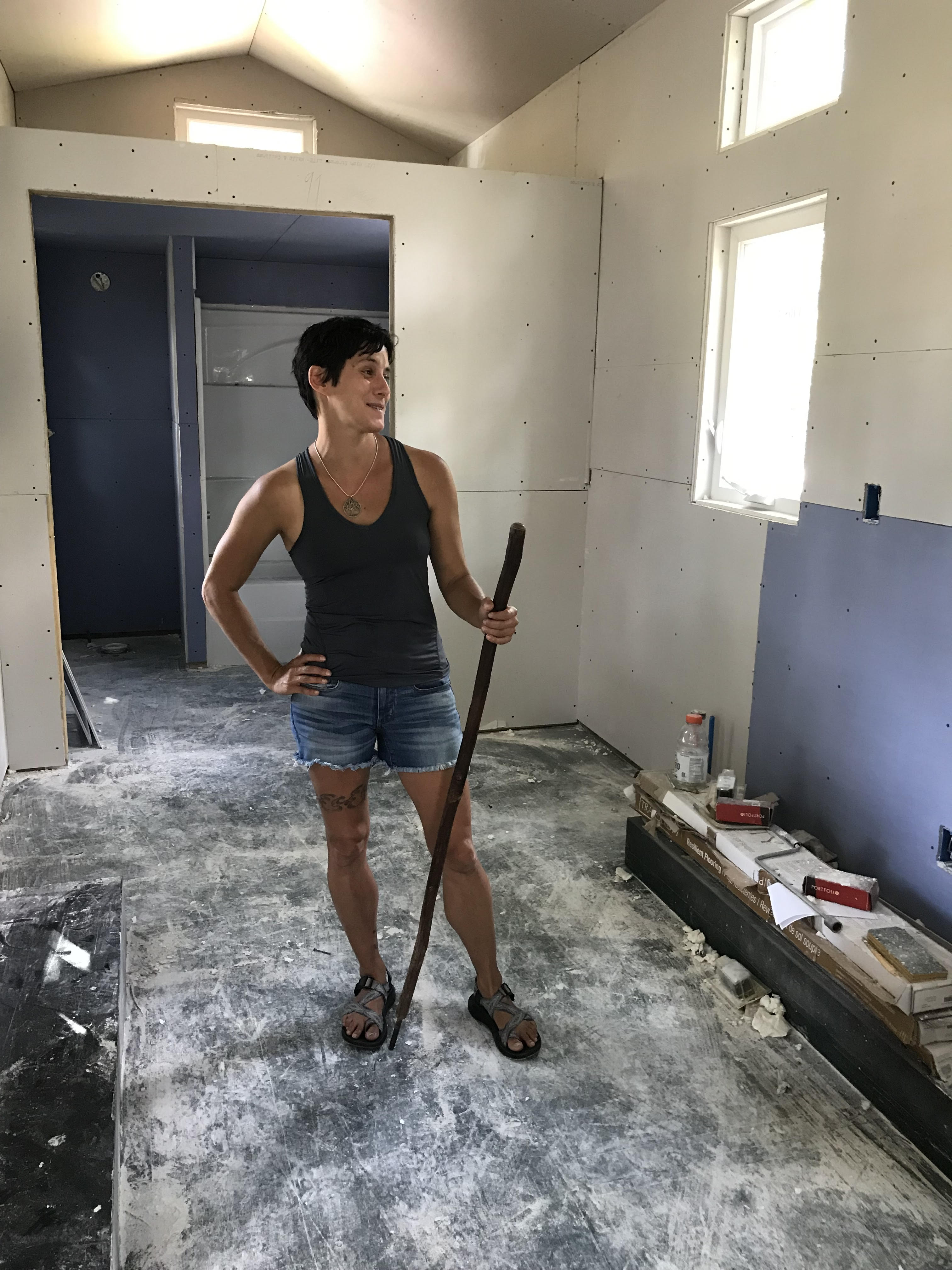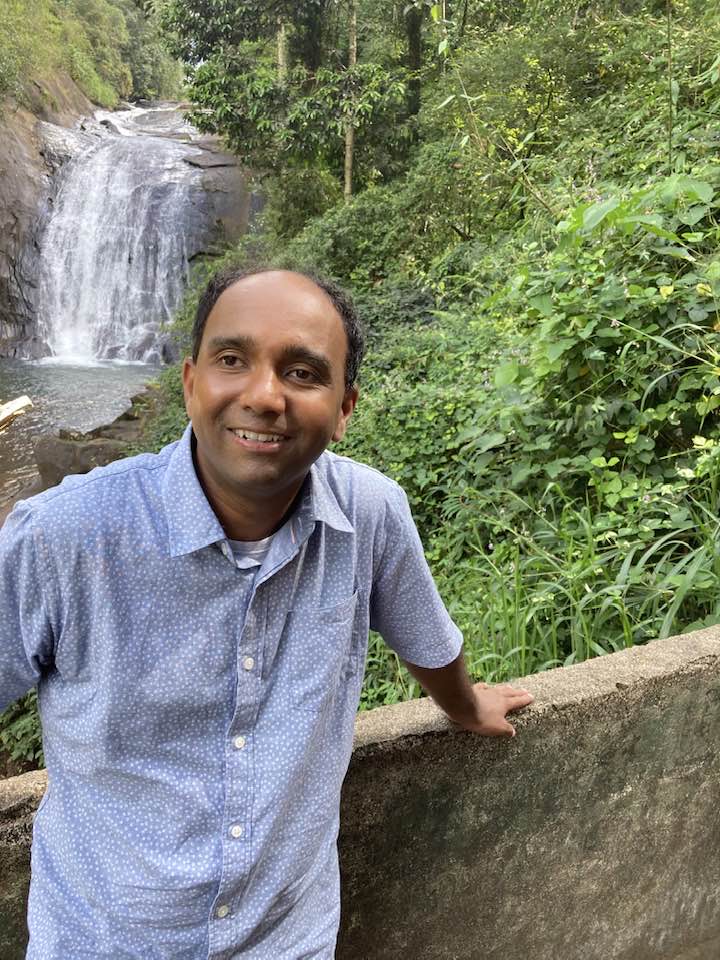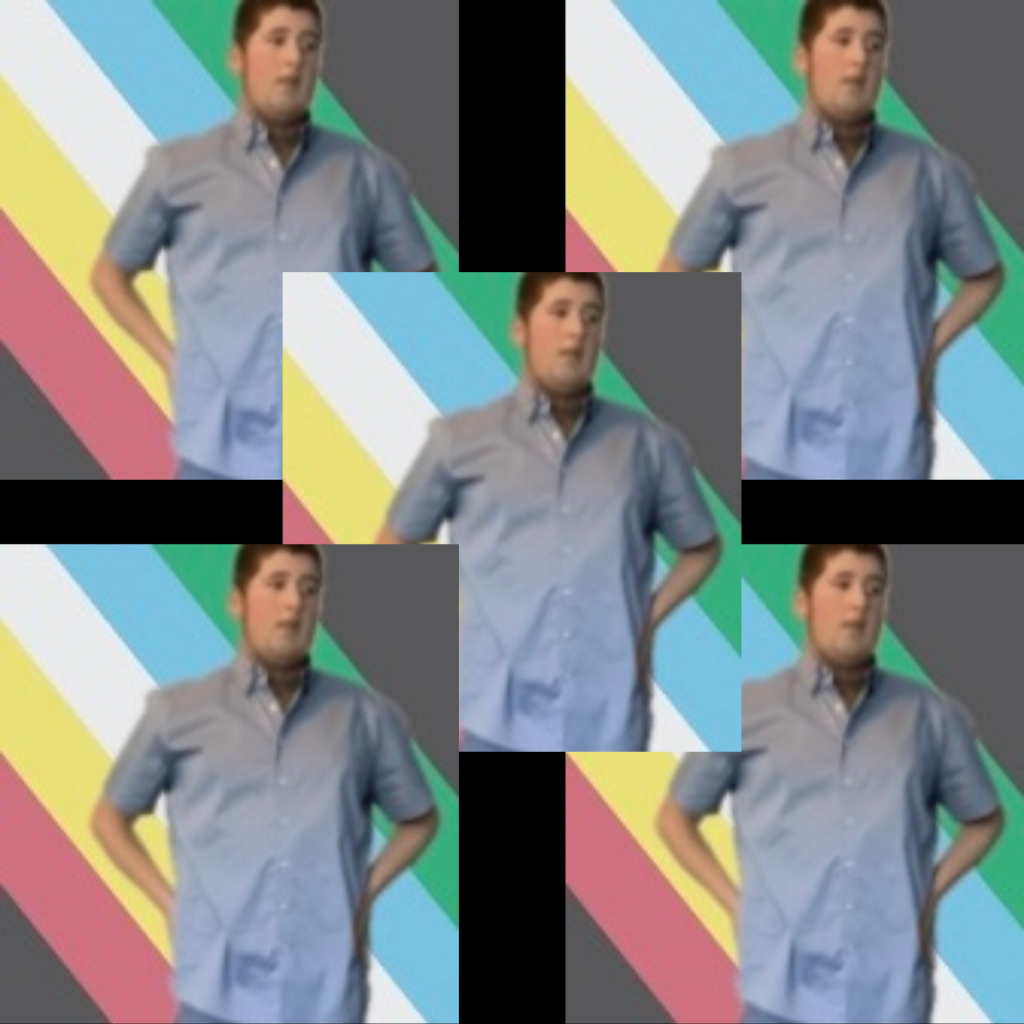Following the loss of my sight, and about five years of total blindness, I developed a gorgeous, technicolor visualization of myself and reality which my neurologists call non-optic sight, or a type of adaptive synesthesia – but let me back up.
Even as I progressively lost my retinal vision, my mind was full of light, and my heart was full of music. I embraced non-visual perception, low vision, double vision, and, difficult as it was, the very abstract phase before final retinal loss. This journey has been one, not into darkness, but into an ever deepening, fascinating and rich embodied experience.
While working on my undergraduate degree in geology, I began actively exercising and integrating my non-visual senses, challenging myself to conduct some kind of sensory conversion, inference, interpolation and synthesis as I perceived, appreciated and navigated the world.
I did not wish for typical sight, or a medical miracle to give me a virtual experience of retinal vision. I wanted to explore the full potential of blindness, and suspected there was more to it than a sharpened sense of hearing.
By the time I was finishing my masters in geophysics, and suddenly lost the rest of my sight, I was ready to radically accept blindness, and began adapting rapidly. To my surprise, this loss did not immerse me in a black and opaque world. Instead, I lived with a continual flickering, electric blue light – whether my eyes were open or closed. I grew used to this, and more comfortable with trusting the intelligence of my body, as well as the embodied and extended felt sense.
Sound, acoustics, and music became as important as ever – of course awareness and attention became indispensable, but it is this felt sense that acted as a ground and phenomenological hub, and never ceases to amaze with the wealth of intuitive feedback it opened up.
I never did have much fear in me, and had left that cumbersome remnant behind a long time before. Without the interference of fear, or of constantly contracting away from the world, the feedback from the felt sense, and from all the senses, is free to come and go with more ease and clarity.
One is not incessantly bombarded with obstacles, but in dialogue with body and environment. One is not in a white cane, parry-for-parry fencing battle with static affordances, but in process, dancing with a dynamic world to the small music of everyday life, and to what I call “the big music,” which cannot be heard with our ears, but is sometimes heard by the heart.
I completed a degree in science education as I shifted my focus more toward inclusive design for learning, and promoting access and inclusion for people with all kinds of diverse abilities. I had the honor of getting to know not just all sorts of blind and visually impaired people, but many people with a wide variety of differences.
And then, in 2013, things went technicolor. At first, with eyes closed, I could see my hands and arms as they moved, in a strange blue-black light vision. Soon, I had full visualization of my body, objects, surfaces, and the world around me. The open-eye visualization became a technicolor wonderland.
All of my senses, especially the sounds, the embodied and extended felt sense, my memory, knowledge and imagination, all fed into a very colorful, dynamic visual world of glowing light.
Yeah, so it was pretty weird, a real trip, a genuine mind-melting, consciousness-expanding, perceptual phase change. I wouldn’t trade it for 20/20 vision and all the money in the world!
And, while it is difficult to explain, it is more than just a visualization. I feel more fully here, more intricately integrated, embodied and connected to everything around the body. I came to feel and see what I had long deeply suspected – that I am much more than an isolated, skin-encapsulated ego.
Reading this so far, you may think I have had a relatively easy life. This could not be further from the truth. There has been enormous hardship, and unhelpful, intrusive and controlling mother, an unhappy, oppressed early adolescence, social awkwardness and, at times, isolation, trauma, injustice, hunger, hard winters, existential crises and spiritual emergencies.
There have also been failed romances, a divorce, what seemed like wrong turns and disappointments. But these are so deeply woven and integrated into the story that they do not stand out, or deserve special elaboration here. I just want to acknowledge that there has also been so much adversity, and it has made me resilient and open. These difficulties have taught me to find he opportunity in adversity.
I cannot help but wonder if there aren’t more blind people with non-optic sight, like me, out there.
Perhaps they don’t talk about it, because people will not believe them, or might call them crazy. Some people thought I was crazy, at first, until the initial scientific paper on my case came out. It is possible that they dismiss any visualization, because it does not seem possible, or they are afraid of hallucinating and losing touch with reality.
Part of my hope in writing this is to see if there are others who have some flavor of non-optic sight. You can read more about this in my Psychology Today blog, and Oliver Sacks’s book The Mind’s Eye.
Jacques Lusseyran, a blind hero of the French resistance, wrote about his non-optic sight in And There was Light, as did Zoltan Torey in Out of Darkness. There are some reported cases where people have early phases of the visualization, perhaps just seeing light blobs form into faces with they eyes closed, perhaps just seeing part of their arms, or the edge of a countertop. While all these reports are by people who once had sight, there are also cases of people who have been blind since birth seeing during near-death experiences, which the authors call “eyeless seeing.”
“Like Daredevil?” people often say, when I try to explain my perception. Sort of, I tell them, only smaller, female, and more human. When it rains, the technicolor droplets make tiny sounds as they splash everywhere, shattering into more colors. In the pouring rain, the world is painted in their tiny, technicolor sounds. It’s so much more beautiful than I could ever explain, but I hope you can imagine it.
While my own case is the topic of current neuroscientific study, and reading about the experiences of others has been wonderful, I would love to connect with anyone living who also has some experience like this. So, if you’re reading this, and it sounds familiar, please be in touch.
About the author
At the time of this post, Gina Marie was working on a PhD in Integral & Transpersonal Psychology, finishing a tiny home and enjoying her practices and a simple, minimal life in the beautiful city of Charleston, SC.
Walking almost everywhere she goes gives her a lot of good time outside, and she starts each day with a run and movement practice. She’s a humble student of yoga, meditation, martial arts and being human. Her twin sister, Andrea, has been her lifelong comrade and is also blind. Although Andrea lives across the ocean, as a writer and poet in Greece, the twins have traded lessons, agreed, disagreed and learned so much together in their adventure into blindness and beyond.
If you’d like to connect with her, you can find her on Facebook and Instagram (@GinaMarieApplebee).



